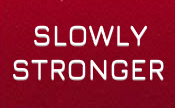Book Score
9/10 – Recommended!
The Muscle and Strength Pyramid: Nutrition is possibly the best nutrition book for athletes and coaches.
Introduction
Eric Helms’ Muscle and Strength Pyramid: Nutrition book, is one of two books he has published, the other being “Muscle and Strength Pyramid: Training”. As the name suggests, the nutrition book focuses on the nutrition side of things.
Helms sets out the goal of the book in the book’s preface, stating “A few years ago I saw a need for a system that comprehensively covered the big picture of nutritional strategies, approaches, and theories for people interested in muscle and strength development.” He aims to give the athletes in strength sports the ability to manage their nutritional needs effectively.
I bought the paperback version, printed by Amazon. This is the version which I will be reviewing – I have not had opportunity to see the pdf version, however I have no reason to believe it differs in quality from the paperback version.
The book, at time of writing, is priced at £35 or $47 (printed version). This is certainly not cheap, but does it give value for money?
The Good
Where to start? I was extremely impressed with this book. The book is very well-written, easy to read, well researched and referenced, and very well edited. Other fitness books on the market can try to artificially increase the size of their book by including unnecessary pictures or rambling on. However, Helms’ Muscle and Strength Pyramid: Nutrition is full of information and guidance throughout the book. I don’t think there is anything in the book that I would cut out or reduce.
Helms sets out the goal of the book in the preface: to offer the reader a system that comprehensively covers nutritional strategies. He appears to achieve this. The bulk of the book is focused on planning an actual diet. To do this, he breaks down the different elements of nutrition into order of importance. Most important is Energy Balance/Calorie Intake, followed by Macronutrients (Carbs, Protein, Fat, Fibre), Micronutrients and Water intake, Nutrient Timing/Refeeds and then finally supplements. Breaking down the nutritional strategies into this pyramid structure is extremely beneficial in this case. Following the book to set up my own sample diet was considerably easier as I knew what to focus the majority of my efforts on.
Each part of the pyramid contains well-researched guidance. Helms does a good job of explaining the research so the reader understands why something is beneficial (or not beneficial) and he uses this research to make recommendations to the reader about how to set up their diet (e.g. how many calories to eat; how much protein to eat etc.). He does make some recommendations that are not based in research but rather his from his own coaching experience, however he makes it clear when he is doing so, and makes it clear that he is only making these recommendations due to a lack of research in the area. He also offers clear advice on when the lifter should gain weight, maintain weight or cut weight.
Only half the book is actually about the pyramid and setting up the macros, micros etc. The rest of the book focuses on all the other areas important to athlete nutrition. It has a chapter on mindset, which does offer some very useful advice on increasing the success of a diet. It also has some excellent content on peaking for competitions and recovery diets. The advice on how to peak for competitions and the different options available are made clear, and the advice offered is easy to understand. Helms also explains the effect going to an unnaturally low level of bodyfat has on your body, to ensure the reader is able to make informed decisions.
To finish off the book there is a chapter of behaviour and lifestyle, covering advice and guidance around maintaining your diet, alcohol, eating out, social support and some more information on tracking macros. There’s nothing ground-breaking in this chapter, but it is all good advice and a good finish to the book.
The Bad
The book does an excellent job of explaining all the research and reasoning behind the recommendations at each stage of the pyramid, so you have a comprehensive understanding of how many calories to eat, and why you need to eat this many calories; what micronutrients you may need to focus on and why you may need to focus on them. This is all good content, and makes the book a lot better. However, this does offer a downside: you will have read 150+ pages on how to set up your diet, and this can make setting up the diet a little more difficult than it perhaps needs to be. What’s missing is a final chapter that brings everything together in a succinct manner – which would be made even better with setting up the diet for a couple of sample athletes.
The Print Quality of the Book
The quality of the book is very high. All text is easily legible, the binding is solid, and covers even have a nice ‘shiny’ finish to them.
The book is printed in black and white, however there really isn’t much need for colour in the book, so this doesn’t appear to really matter.
The final verdict on the Muscle and Strength Pyramid Nutrition book
Highly recommended. The book is a comprehensive resource of practical advice for athletes looking to set up their nutrition or manage the nutrition of athletes they coach.
If I had to recommend one book on nutrition, then this would be it. The book covers almost all bases, and is useful for almost every athlete and during almost every part of their training life.
Extremely high quality book, and a must-buy.
